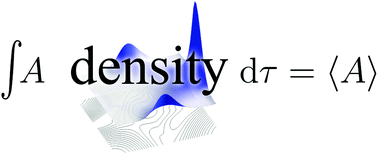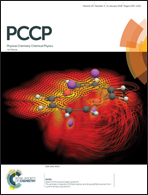Intermolecular configurations dominated by quadrupole–quadrupole electrostatic interactions: explicit correlation treatment of the five-dimensional potential energy surface and infrared spectra for the CO–N2 complex†
Abstract
A thorough understanding of the intermolecular configurations of van der Waals complexes is a great challenge due to their weak interactions, floppiness and anharmonic nature. Although high-resolution microwave or infrared spectroscopy provides one of the most direct and precise pieces of experimental evidence, the origin and key role in determining such intermolecular configurations of a van der Waals system strongly depend on its highly accurate potential energy surface (PES) and a detailed analysis of its ro-vibrational wavefunctions. Here, a new five-dimensional potential energy surface for the van der Waals complex of CO–N2 which explicitly incorporates the dependence on the stretch coordinate of the CO monomer is generated using the explicitly correlated couple cluster (CCSD(T)-F12) method in conjunction with a large basis set. Analytic four-dimensional PESs are obtained by the least-squares fitting of vibrationally averaged interaction energies for v = 0 and v = 1 to the Morse/Long-Range potential mode (VMLR). These fits to 7966 points have root-mean-square deviations (RMSD) of 0.131 cm−1 and 0.129 cm−1 for v = 0 and v = 1, respectively, with only 315 parameters. Energy decomposition analysis is carried out, and it reveals that the dominant factor in controlling intermolecular configurations is quadrupole–quadrupole electrostatic interactions. Moreover, the rovibrational levels and wave functions are obtained for the first time. The predicted infrared transitions and intensities for the ortho-N2–CO complex as well as the calculated energy levels for para-N2–CO are in good agreement with the available experimental data with RMSD discrepancies smaller than 0.068 cm−1. The calculated infrared band origin shift associated with the fundamental band frequency of CO is −0.721 cm−1 for ortho-N2–CO which is in excellent agreement with the experimental value of −0.739 cm−1. The agreement with experimental values validates the high quality of the PESs and enhances our confidence to explain the observed mystery lines around 2163 cm−1.



 Please wait while we load your content...
Please wait while we load your content...